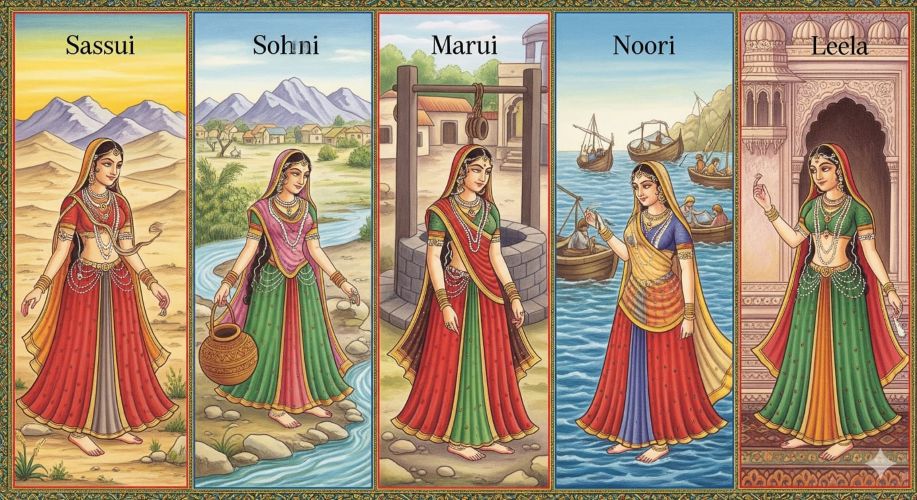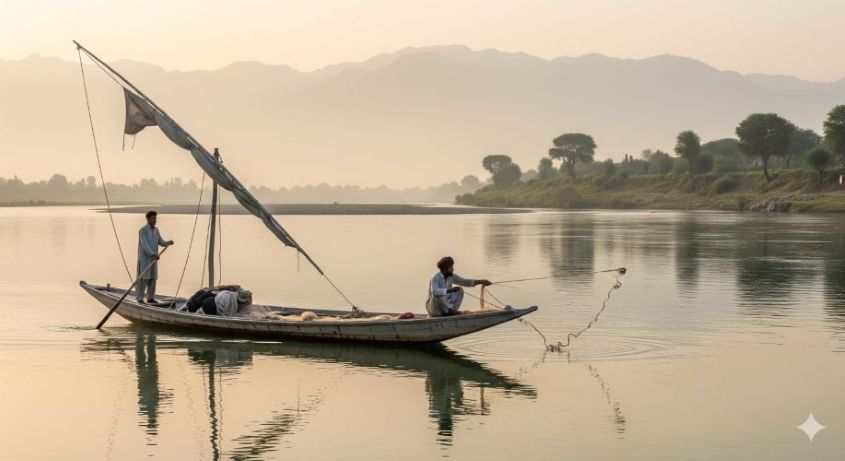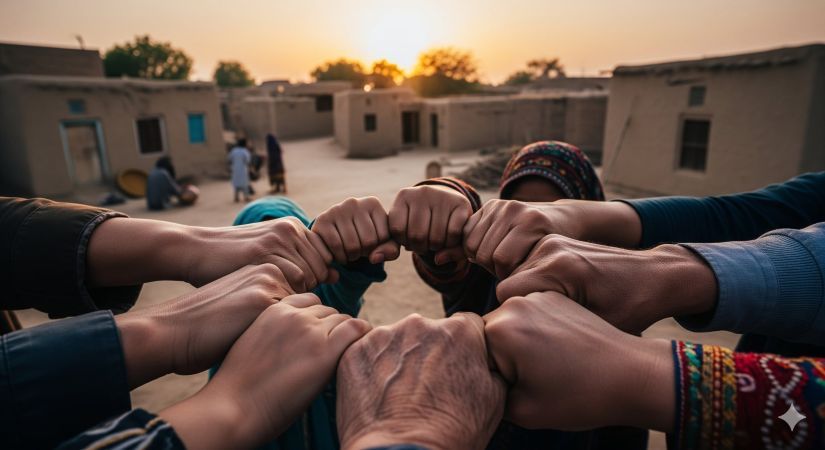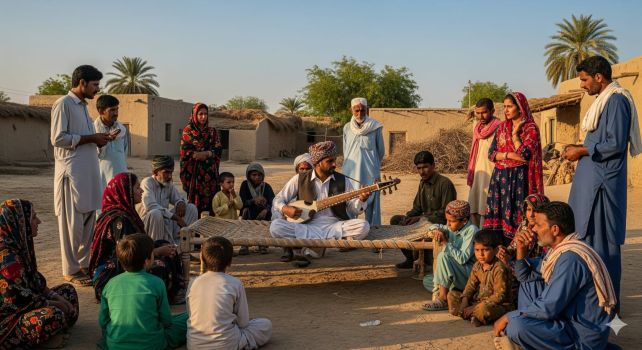Sindh Heritage in Folk Songs

By Abdullah Usman Morai | Sweden
SINDH: The history of Sindh is not only found in ancient relics, inscriptions, or the tales of kings, but a significant part of it is also preserved in folk songs and folk tales. These folk songs, passed down through generations, still echo today with their original truth and charm. They are not merely music or melody, but living evidence of Sindh’s past, its social life, ethics, and cultural heritage. In these songs, one can see the reflections of the joys and sorrows of Sindhi people, their daily struggles, and their dreams. These are not just verses of poetry but the very language of the people’s hearts and their history.
Historical Glimpses and Folk Songs
There are many periods in Sindh’s history for which no formal written records exist. In such cases, folk songs help us understand the difficulties and social conditions of those times. For example, many folk songs from the eras of the Soomra and Samma dynasties speak of the bravery, loyalty, and generosity of their rulers. These songs beautifully narrate the legendary tales of heroines like Sassui, Sohni, Marui, Noori, and Leela, which still remain fresh in the memory of Sindhi people.
Take Marui’s story as an example; it is not merely a romantic tale, but a great symbol of truthfulness toward one’s culture, homeland, and honor. Through folk songs, we learn of Marui’s courage, patience, and love for her land. Similarly, other songs acquaint us with the wars, social tensions, and humanitarian events that occurred throughout different periods of Sindh’s history. Every word within these songs becomes a medium to understand that era’s historical context.

Social Values and Moral Lessons
Sindhi folk songs are built on the foundations of humanism, truth, and moral values. They teach the youth about good social conduct and encourage them to live meaningful lives.
Love and Loyalty
Folk songs present love not just as an emotion, but as a profound human value. The tale of Sohni and Mehar teaches us about great sacrifice and the truthfulness of love. Likewise, the story of Noori and Jam Tamachi breaks through class differences, offering an example of pure and genuine love.

Compassion and Unity
A strong sense of compassion for the poor and oppressed is evident in Sindhi folk songs. These songs have long raised their voice against growing injustices in society and have taught people to stand together. Ideas such as “walking together” and “being one hand” are repeatedly emphasized in these songs, highlighting the importance of unity in Sindhi society.]
Nature and Simple Life
Many folk songs describe the beauty of Sindh, its river, riverbanks, and birds. These songs reveal the deep bond between humans and nature, teaching respect and care for the environment. For instance, songs related to the River Indus/ Sindhu daryah not only provide a sense of cultural identity but also instill environmental awareness.
The Heartbeat of the People
The greatest quality of folk songs is that they are a mirror of people’s lives. They do not glorify kings or rulers but present the real images of ordinary life. These songs are sung at weddings, festivals, and joyous occasions, as well as during times of grief and hardship. Their simple and honest language touches every heart.
Through them, we also learn how Sindhi people lived, what clothes they wore, what foods they ate, and what customs they practiced. In this way, folk songs become a valuable source for history, sociology, and anthropology.

Preservation and Future Efforts
In today’s age of globalization, where everything is fast and instant, preserving folk songs is a major challenge. The younger generation is often drawn toward modern music and culture. Yet, we must take steps to safeguard this priceless heritage. Cultural institutions, schools, and media should promote folk songs. Television programs featuring them should be produced, and schools should include them in their teaching. Young artists should be encouraged to present these songs in modern styles so that the new generation develops an interest in them.
Folk songs are not only a part of our past but also an important element of our present and future. The messages hidden within them can make our society more prosperous, peaceful, and progressive. That is why we must continue our efforts to keep them alive.
__________________
Abdullah Soomro, pen name Abdullah Usman Morai, hailing from Moro town of Sindh, province of Pakistan, is based in Stockholm Sweden. Currently he is working as Groundwater Engineer in Stockholm Sweden. He did BE (Agriculture) from Sindh Agriculture University Tando Jam and MSc water systems technology from KTH Stockholm Sweden as well as MSc Management from Stockholm University. Beside this he also did masters in journalism and economics from Shah Abdul Latif University Khairpur Mirs, Sindh. He is author of a travelogue book named ‘Musafatoon’. He writes articles from time to time. A frequent traveler, he also does podcasts on YouTube with channel name: VASJE Podcast.




